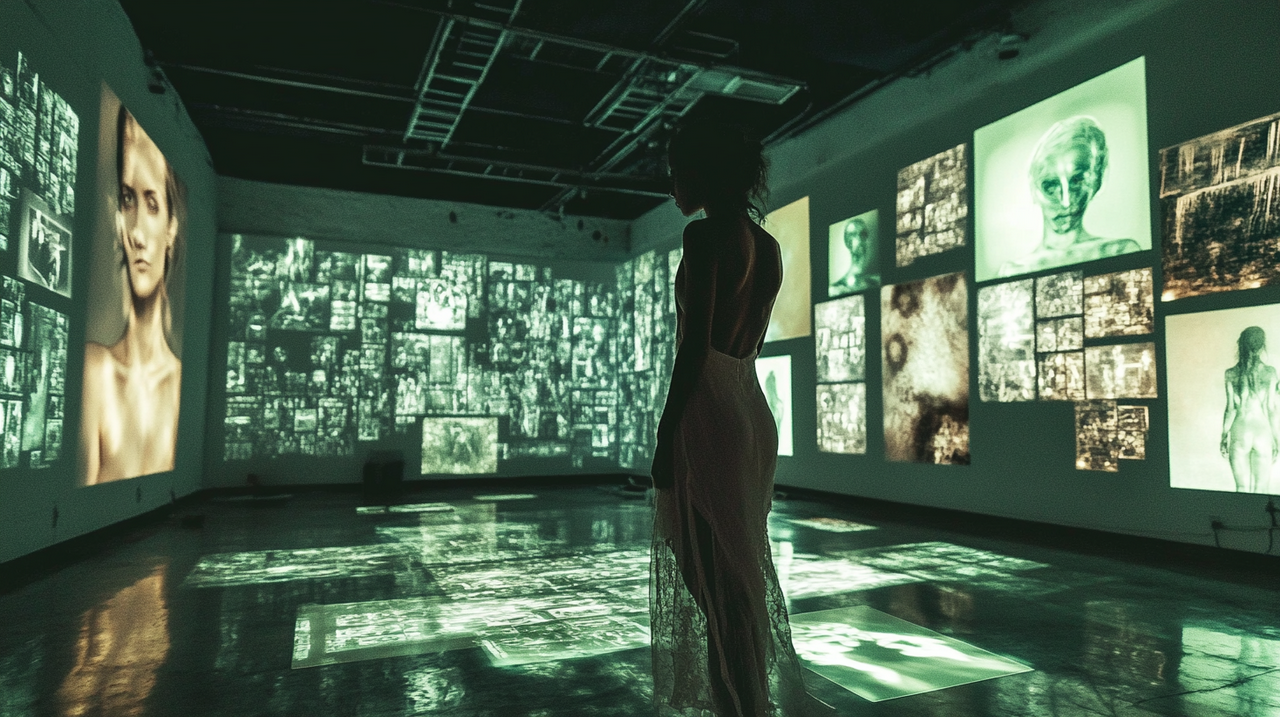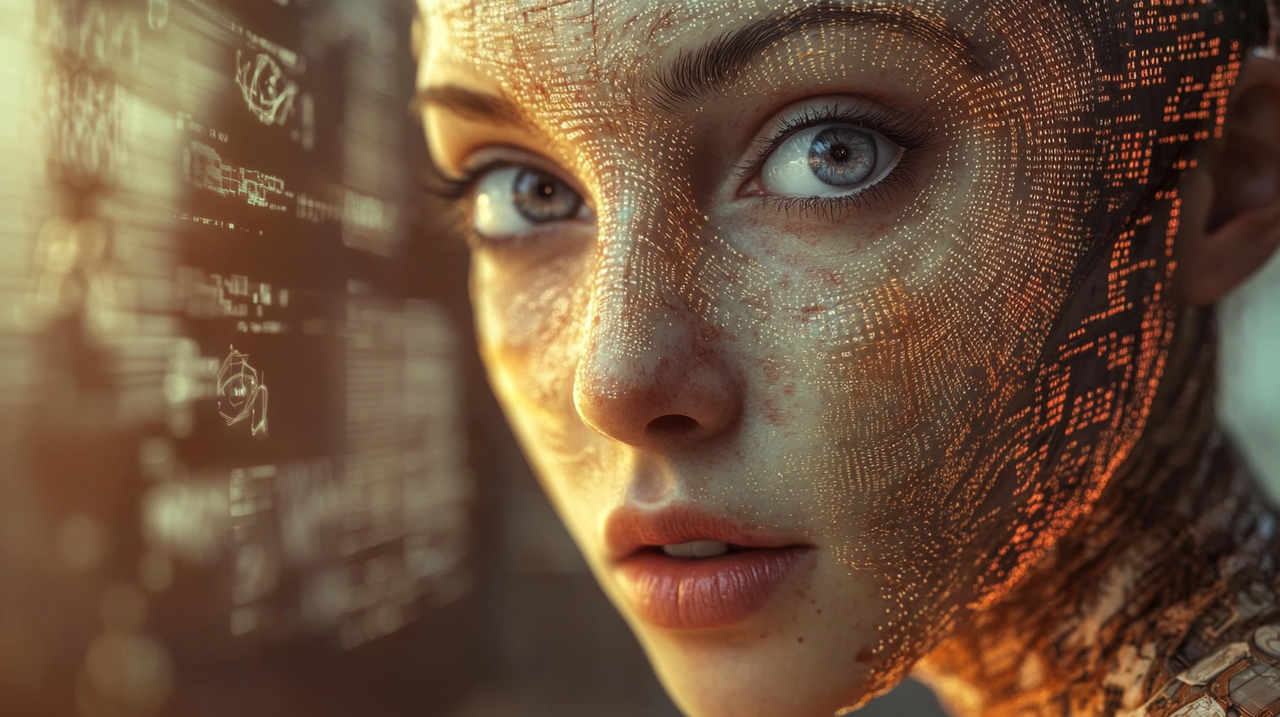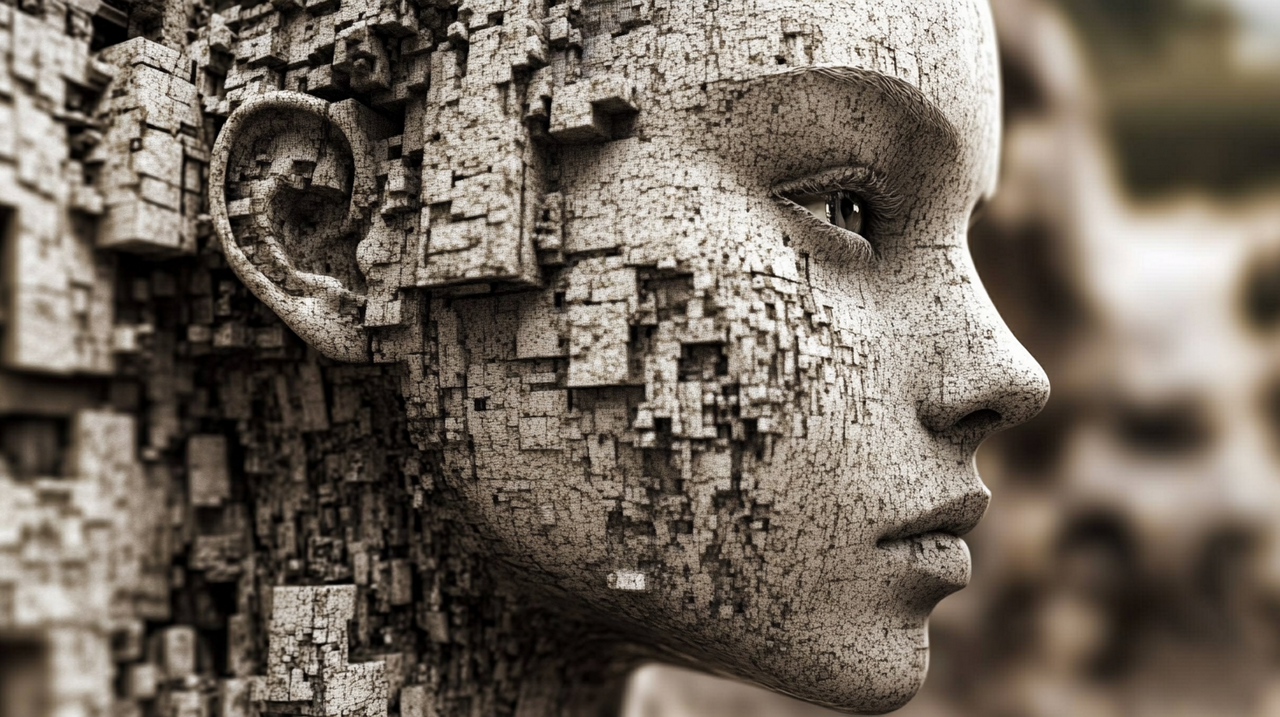The Moral Minefield: Six Ethical Crises Redefining Global Order

The rapid advancement of artificial intelligence has created unprecedented ethical challenges that demand immediate attention. As AI systems become more sophisticated and widespread, several critical flashpoints have emerged that threaten to reshape society in fundamental ways. From autonomous weapons systems being tested in active conflicts to AI-generated content flooding information ecosystems, these challenges represent more than technical problems—they are defining tests of how humanity will govern its most powerful technologies.
Six Critical Flashpoints Threatening Society
- Military Misuse: Autonomous weapons systems in active deployment
- Employment Displacement: AI as workforce replacement, not augmentation
- Deepfakes: Synthetic media undermining visual truth
- Information Integrity: AI-generated content polluting digital ecosystems
- Copyright Disputes: Machine creativity challenging intellectual property law
- Bias Amplification: Systematising inequality at unprecedented scale
The Emerging Crisis Landscape
What happens when machines begin making life-and-death decisions? When synthetic media becomes indistinguishable from reality? When entire industries discover they can replace human workers with AI systems that never sleep, never demand raises, and never call in sick?
These aren't hypothetical scenarios anymore. They're unfolding right now, creating a perfect storm of ethical challenges that society is struggling to address. The urgency stems from the accelerating pace of AI deployment across military, commercial, and social contexts. Unlike previous technological revolutions that unfolded over decades, AI capabilities are advancing and being integrated into critical systems within months or years. This compression of timelines has created a dangerous gap between technological capability and governance frameworks, leaving society vulnerable to unintended consequences and malicious exploitation.
Generative artificial intelligence stands at the centre of interconnected crises that threaten to reshape society in ways we are only beginning to understand. These are not abstract philosophical concerns but immediate, tangible challenges that demand urgent attention from policymakers, technologists, and society at large. The most immediate threat emerges from the militarisation of AI, where autonomous systems are being tested and deployed in active conflicts with varying degrees of human oversight. This represents a fundamental shift in the nature of warfare and raises profound questions about accountability and the laws of armed conflict.
Employment transformation constitutes another major challenge as organisations increasingly conceptualise AI systems as workforce components rather than mere tools. This shift represents more than job displacement—it challenges fundamental assumptions about work, value creation, and human purpose in society. Meanwhile, deepfakes and synthetic media constitute a growing concern, where the technology to create convincing fake content has become increasingly accessible. This democratisation of deception threatens the foundations of evidence-based discourse and democratic decision-making.
Information integrity more broadly faces challenges as AI systems can generate vast quantities of plausible but potentially inaccurate content, creating what researchers describe as pollution of the information environment across digital platforms. Copyright and intellectual property disputes represent another flashpoint, where AI systems trained on vast datasets of creative works produce outputs that blur traditional lines of ownership and originality. Artists, writers, and creators find their styles potentially replicated without consent whilst legal frameworks struggle to address questions of fair use and compensation.
The interconnected challenges of military misuse, employment displacement, deepfakes, information integrity, copyright disputes, and bias amplification do not exist in isolation. Solutions that address one area may exacerbate problems in another, requiring holistic approaches that consider the complex interactions between different aspects of AI deployment. Bias presents ongoing challenges, where AI systems may inherit and amplify prejudices embedded in their training data. These systems risk systematising and scaling inequalities, creating new forms of discrimination that operate with the appearance of objectivity.
When Machines Choose Targets
Picture this: a drone hovers over a battlefield, its cameras scanning the terrain below. Its AI brain processes thousands of data points per second—heat signatures, movement patterns, facial recognition matches. Then, without human input, it makes a decision. Target acquired. Missile launched. Life ended.
This isn't science fiction. It's happening now.
The most immediate and actively developing ethical flashpoint centres on the militarisation of artificial intelligence, where theoretical concerns are becoming operational realities. Current conflicts serve as testing grounds for AI-enhanced warfare, where autonomous systems make decisions with varying degrees of human oversight. The International Committee of the Red Cross has expressed significant concerns about AI-powered weapons systems that can select and engage targets without direct human input. These technologies represent what many consider a crossing of moral and legal thresholds that have governed warfare for centuries.
Current military AI applications include reconnaissance drones that use machine learning to identify potential targets and various autonomous systems that can search for and engage assets. These systems represent a shift in the nature of warfare, where decisions increasingly supplement or replace human judgement in contexts where the stakes could not be higher. The technology's rapid evolution has created a dangerous gap between deployment and governance. Whilst international bodies engage in policy debates about establishing limits on autonomous weapons, military forces are actively integrating these systems into their operational frameworks.
This mismatch between the pace of technological development and regulatory response creates a period of uncertainty where the rules of engagement remain undefined. The implications extend beyond immediate military applications. The normalisation of autonomous decision-making in warfare could establish precedents for AI decision-making in other high-stakes contexts, from policing to border security. Once society accepts that machines can make critical decisions in one domain, the barriers to their use in others may begin to erode.
Military contractors and defence agencies argue that AI weapons systems can potentially reduce civilian casualties by making more precise targeting decisions and removing human errors from combat scenarios. They contend that AI systems might distinguish between combatants and non-combatants more accurately than stressed soldiers operating in chaotic environments. However, critics raise fundamental questions about accountability and control. When an autonomous weapon makes an error resulting in civilian casualties, the question of responsibility—whether it lies with the programmer, the commanding officer who deployed it, or the political leadership that authorised its use—remains largely unanswered.
The legal and ethical frameworks for addressing such scenarios are underdeveloped. The challenge is compounded by the global nature of AI development and the difficulty of enforcing international agreements on emerging technologies. Unlike nuclear weapons, which require specialised materials and facilities that can be monitored, AI weapons can potentially be developed using commercially available hardware and software, making comprehensive oversight challenging. The race to deploy these systems creates pressure to move fast and break things—except in this case, the things being broken might be the foundations of international humanitarian law.
The technical capabilities of these systems continue to advance rapidly. Modern AI weapons can operate in swarms, coordinate attacks across multiple platforms, and adapt to changing battlefield conditions without human intervention. They can process sensor data from multiple sources simultaneously, make split-second decisions based on complex threat assessments, and execute coordinated responses across distributed networks. This level of sophistication represents a qualitative change in the nature of warfare, where the speed and complexity of AI decision-making may exceed human ability to understand or control.
International efforts to regulate autonomous weapons have made limited progress. The Convention on Certain Conventional Weapons has held discussions on lethal autonomous weapons systems for several years, but consensus on binding restrictions remains elusive. Some nations advocate for complete prohibition of fully autonomous weapons, whilst others argue for maintaining human oversight requirements. The definitional challenges alone—what constitutes “meaningful human control” or “autonomous” operation—have proven difficult to resolve in international negotiations.
The proliferation risk is significant. As AI technology becomes more accessible and military applications more proven, the barriers to developing autonomous weapons systems continue to decrease. Non-state actors, terrorist organisations, and smaller nations may eventually gain access to these capabilities, potentially destabilising regional security balances and creating new forms of asymmetric warfare. The dual-use nature of AI technology means that advances in civilian applications often have direct military applications, making it difficult to control the spread of relevant capabilities.
The Rise of AI as Workforce
Something fundamental has shifted in how we talk about artificial intelligence in the workplace. The conversation has moved beyond “How can AI help our employees?” to “How can AI replace our employees?” This isn't just semantic evolution—it's a transformation in how we conceptualise labour and value creation in the modern economy.
The conversation around artificial intelligence's impact on employment has undergone a fundamental shift that signals a deeper transformation than simple job displacement. Rather than viewing AI as a tool that augments human workers, organisations are increasingly treating AI systems as workforce components and building enterprises around this structural integration. This evolution reflects more than semantic change—it represents a reconceptualisation of what constitutes labour and value creation in the modern economy.
Companies are no longer only asking how AI can help their human employees work more efficiently; they are exploring how AI systems can perform entire job functions independently. The transformation follows patterns identified in technology adoption models, particularly Geoffrey A. Moore's “Crossing the Chasm” framework, which describes the challenge of moving from early experimentation to mainstream, reliable use. Many organisations find themselves at this critical juncture with AI integration, where the gap between proof-of-concept demonstrations and scalable, dependable AI integration presents significant challenges.
Early adopters in sectors ranging from customer service to content creation have begun treating AI systems as components with specific roles, responsibilities, and performance metrics. These AI systems do not simply automate repetitive tasks—they engage in complex problem-solving, creative processes, and decision-making that was previously considered uniquely human. The implications for human workers vary dramatically across industries and skill levels. In some cases, AI systems complement human capabilities, handling routine aspects of complex jobs and freeing human workers to focus on higher-level strategic thinking and relationship building.
In others, AI systems may replace entire job categories, particularly in roles that involve pattern recognition, data analysis, and standardised communication. The financial implications of this shift are substantial. AI systems do not require salaries, benefits, or time off, and they can operate continuously. For organisations operating under competitive pressure, the economic incentives to integrate AI systems are compelling, particularly when AI performance meets or exceeds human capabilities in specific domains.
However, the transition to AI-integrated workforces presents challenges that extend beyond simple cost-benefit calculations. Human workers bring contextual understanding, emotional intelligence, and adaptability that current AI systems struggle to replicate. They can navigate ambiguous situations, build relationships with clients and colleagues, and adapt to unexpected changes in ways that AI systems cannot. The social implications of widespread AI integration could be profound. If significant portions of traditional job functions become automated, models of income distribution, social status, and personal fulfilment through work may require fundamental reconsideration.
Some economists propose universal basic income as a potential solution, whilst others advocate for retraining programmes that help human workers develop skills that complement rather than compete with AI capabilities. The challenge isn't just economic—it's existential. What does it mean to be human in a world where machines can think, create, and decide? How do we maintain dignity and purpose when our traditional sources of both are being automated away?
The transformation is already visible across multiple sectors. In financial services, AI systems now handle complex investment decisions, risk assessments, and customer interactions that previously required human expertise. Legal firms use AI for document review, contract analysis, and legal research tasks that once employed teams of junior lawyers. Healthcare organisations deploy AI for diagnostic imaging, treatment recommendations, and patient monitoring functions. Media companies use AI for content generation, editing, and distribution decisions.
The speed of this transformation has caught many workers and institutions unprepared. Traditional education systems, designed to prepare workers for stable career paths, struggle to adapt to a landscape where job requirements change rapidly and entire professions may become obsolete within years rather than decades. Professional associations and labour unions face challenges in representing workers whose roles are being fundamentally altered or eliminated by AI systems.
The psychological impact on workers extends beyond economic concerns to questions of identity and purpose. Many people derive significant meaning and social connection from their work, and the prospect of being replaced by machines challenges fundamental assumptions about human value and contribution to society. This creates not just economic displacement but potential social and psychological disruption on a massive scale.
Deepfakes and the Challenge to Visual Truth
Seeing is no longer believing. In an age where a teenager with a laptop can create a convincing video of anyone saying anything, the very foundation of visual evidence is crumbling beneath our feet.
The proliferation of deepfake technology represents one of the most immediate threats to information integrity, with implications that extend far beyond entertainment or political manipulation. As generative AI systems become increasingly sophisticated, the line between authentic and synthetic media continues to blur, creating challenges for shared notions of truth and evidence. Current deepfake technology can generate convincing video, audio, and image content using increasingly accessible computational resources.
What once required significant production budgets and technical expertise can now be accomplished with consumer-grade hardware and available software. This democratisation of synthetic media creation has unleashed a flood of fabricated content that traditional verification methods struggle to address. The technology's impact extends beyond obvious applications like political disinformation or celebrity impersonation. Deepfakes are increasingly used in fraud schemes, where criminals create synthetic video calls to impersonate executives or family members for financial scams.
Insurance companies report concerns about claims involving synthetic evidence, whilst legal systems grapple with questions about the admissibility of digital evidence when sophisticated forgeries are possible. Perhaps most concerning is what researchers term the “liar's dividend” phenomenon, where the mere possibility of deepfakes allows bad actors to dismiss authentic evidence as potentially fabricated. Politicians caught in compromising situations can claim their documented behaviour is synthetic, whilst genuine whistleblowers find their evidence questioned simply because deepfake technology exists.
Detection technologies have struggled to keep pace with generation capabilities. Whilst researchers have developed various techniques for identifying synthetic media—from analysing subtle inconsistencies in facial movements to detecting compression artefacts—these methods often lag behind the latest generation techniques. Moreover, as detection methods become known, deepfake creators adapt their systems to evade them, creating an ongoing arms race between synthesis and detection.
The solution landscape for deepfakes involves multiple complementary approaches. Technical solutions include improved detection systems, blockchain-based content authentication systems, and hardware-level verification methods that can prove a piece of media was captured by a specific device at a specific time and location. Legal frameworks are evolving to address deepfake misuse. Several jurisdictions have enacted specific legislation criminalising non-consensual deepfake creation, particularly in cases involving intimate imagery or electoral manipulation.
However, enforcement remains challenging, particularly when creators operate across international boundaries or use anonymous platforms. Platform-based solutions involve social media companies and content distributors implementing policies and technologies to identify and remove synthetic media. These efforts face the challenge of scale—billions of pieces of content are uploaded daily—and the difficulty of automated systems making nuanced decisions about context and intent. Educational initiatives focus on improving public awareness of deepfake technology and developing critical thinking skills for evaluating digital media.
These programmes teach individuals to look for potential signs of synthetic content whilst emphasising the importance of verifying information through multiple sources. But here's the rub: as deepfakes become more sophisticated, even trained experts struggle to distinguish them from authentic content. We're approaching a world where the default assumption must be that any piece of media could be fake—a profound shift that undermines centuries of evidence-based reasoning.
The technical sophistication of deepfake technology continues to advance rapidly. Modern systems can generate high-resolution video content with consistent lighting, accurate lip-sync, and natural facial expressions that fool human observers and many detection systems. Audio deepfakes can replicate voices with just minutes of training data, creating synthetic speech that captures not just vocal characteristics but speaking patterns and emotional inflections.
The accessibility of these tools has expanded dramatically. What once required specialised knowledge and expensive equipment can now be accomplished using smartphone apps and web-based services. This democratisation means that deepfake creation is no longer limited to technically sophisticated actors but is available to anyone with basic digital literacy and internet access.
The implications for journalism and documentary evidence are profound. News organisations must now verify not just the accuracy of information but the authenticity of visual and audio evidence. Courts must develop new standards for evaluating digital evidence when sophisticated forgeries are possible. Historical preservation faces new challenges as the ability to create convincing fake historical footage could complicate future understanding of past events.
Information Integrity in the Age of AI Generation
Imagine trying to find a needle in a haystack, except the haystack is growing exponentially every second, and someone keeps adding fake needles that look exactly like the real thing. That's the challenge facing anyone trying to navigate today's information landscape.
The proliferation of AI-generated content has created challenges for information environments where distinguishing authentic from generated information becomes increasingly difficult. This challenge extends beyond obvious cases of misinformation to include the more subtle erosion of shared foundations that enable democratic discourse and scientific progress. Current AI systems can generate convincing text, images, and multimedia content across virtually any topic, often incorporating real facts and plausible reasoning whilst potentially introducing subtle inaccuracies or biases.
This capability creates a new category of information that exists in the grey area between truth and falsehood—content that may be factually accurate in many details whilst being fundamentally misleading in its overall message or context. The scale of AI-generated content production far exceeds human capacity for verification. Large language models can produce thousands of articles, social media posts, or research summaries in the time it takes human fact-checkers to verify a single claim. This creates an asymmetric scenario where the production of questionable content vastly outpaces efforts to verify its accuracy.
Traditional fact-checking approaches, which rely on human expertise and source verification, struggle to address the volume and sophistication of AI-generated content. Automated fact-checking systems, whilst promising, often fail to detect subtle inaccuracies or contextual manipulations that make AI-generated content misleading without being explicitly false. The problem is compounded by the increasing sophistication of AI systems in mimicking authoritative sources and communication styles.
AI can generate content that appears to come from respected institutions or publications, complete with appropriate formatting, citation styles, and rhetorical conventions. This capability makes it difficult for readers to use traditional cues about source credibility to evaluate information reliability. Scientific and academic communities face particular challenges as AI-generated content begins to appear in research literature and educational materials. The peer review process, which relies on human expertise to evaluate research quality and accuracy, may not be equipped to detect sophisticated AI-generated content that incorporates real data and methodologies whilst drawing inappropriate conclusions.
Educational institutions grapple with students using AI to generate assignments, research papers, and other academic work. Whilst some uses of AI in education may be beneficial, the widespread availability of AI writing tools challenges traditional approaches to assessment and raises questions about academic integrity and learning outcomes. News media organisations face the challenge of competing with AI-generated content that can be produced more quickly and cheaply than traditional journalism.
Some outlets have begun experimenting with AI-assisted reporting, whilst others worry about the impact of AI-generated news on public trust and the economics of journalism. The result is an information ecosystem where the signal-to-noise ratio is rapidly deteriorating, where authoritative voices struggle to be heard above the din of synthetic content, and where the very concept of expertise is being challenged by machines that can mimic any writing style or perspective.
The economic incentives exacerbate these problems. AI-generated content is cheaper and faster to produce than human-created content, creating market pressures that favour quantity over quality. Content farms and low-quality publishers can use AI to generate vast amounts of material designed to capture search traffic and advertising revenue, regardless of accuracy or value to readers.
Social media platforms face the challenge of moderating AI-generated content at scale. The volume of content uploaded daily makes human review impossible for all but the most sensitive material, whilst automated moderation systems struggle to distinguish between legitimate AI-assisted content and problematic synthetic material. The global nature of information distribution means that content generated in one jurisdiction may spread worldwide before local authorities can respond.
The psychological impact on information consumers is significant. As people become aware of the prevalence of AI-generated content, trust in information sources may decline broadly, potentially leading to increased cynicism and disengagement from public discourse. This erosion of shared epistemic foundations could undermine democratic institutions that depend on informed public debate and evidence-based decision-making.
Copyright in the Age of Machine Creativity
What happens when a machine learns to paint like Picasso, write like Shakespeare, or compose like Mozart? And what happens when that machine can do it faster, cheaper, and arguably better than any human alive?
The intersection of generative AI and intellectual property law represents one of the most complex and potentially transformative challenges facing creative industries. Unlike previous technological disruptions that changed how creative works were distributed or consumed, AI systems fundamentally alter the process of creation itself, raising questions about authorship, originality, and ownership that existing legal frameworks are struggling to address.
Current AI training methodologies rely on vast datasets that include millions of works—images, text, music, and other creative content—often used without explicit permission from rights holders. This practice, defended by AI companies as fair use for research and development purposes, has sparked numerous legal challenges from artists, writers, and other creators who argue their work is being exploited without compensation. The legal landscape remains unsettled, with different jurisdictions taking varying approaches to AI training data and copyright.
Some legal experts suggest that training AI systems on copyrighted material may constitute fair use, particularly when the resulting outputs are sufficiently transformative. Others indicate that commercial AI systems built on copyrighted training data may require licensing agreements with rights holders. The challenge extends beyond training data to questions about AI-generated outputs. When an AI system creates content that closely resembles existing copyrighted works, determining whether infringement has occurred becomes extraordinarily complex.
Traditional copyright analysis focuses on substantial similarity and access to original works, but AI systems may produce similar outputs without direct copying, instead generating content based on patterns learned from training data. Artists have reported instances where AI systems can replicate their distinctive styles with remarkable accuracy, effectively allowing anyone to generate new works “in the style of” specific artists without permission or compensation. This capability challenges fundamental assumptions about artistic identity and the economic value of developing a unique creative voice.
The music industry faces particular challenges, as AI systems can now generate compositions that incorporate elements of existing songs whilst remaining technically distinct. The question of whether such compositions constitute derivative works, and thus require permission from original rights holders, remains legally ambiguous. Several high-profile cases are currently working their way through the courts, including The New York Times' lawsuit against OpenAI and Microsoft, which alleges that these companies used copyrighted news articles to train their AI systems without permission. The newspaper argues that AI systems can reproduce substantial portions of their articles and that this use goes beyond fair use protections.
Visual artists have filed class-action lawsuits against companies like Stability AI, Midjourney, and DeviantArt, claiming that AI image generators were trained on copyrighted artwork without consent. These cases challenge the assumption that training AI systems on copyrighted material constitutes fair use, particularly when the resulting systems compete commercially with the original creators. The outcomes of these cases could establish important precedents for how copyright law applies to AI training and generation.
Several potential solutions are emerging from industry stakeholders and legal experts. Licensing frameworks could establish mechanisms for rights holders to be compensated when their works are used in AI training datasets. These systems would need to handle the massive scale of modern AI training whilst providing fair compensation to creators whose works contribute to AI capabilities. Technical solutions include developing AI systems that can track and attribute the influence of specific training examples on generated outputs. This would allow for more granular licensing and compensation arrangements, though the computational complexity of such systems remains significant.
But here's the deeper question: if an AI can create art indistinguishable from human creativity, what does that say about the nature of creativity itself? Are we witnessing the democratisation of artistic expression, or the commoditisation of human imagination? The answer may determine not just the future of copyright law, but the future of human creative endeavour.
The economic implications for creative industries are profound. If AI systems can generate content that competes with human creators at a fraction of the cost, entire creative professions may face existential challenges. The traditional model of creative work—where artists, writers, and musicians develop skills over years and build careers based on their unique capabilities—may need fundamental reconsideration.
Some creators are exploring ways to work with AI systems rather than compete against them, using AI as a tool for inspiration, iteration, or production assistance. Others are focusing on aspects of creativity that AI cannot replicate, such as personal experience, cultural context, and human connection. The challenge is ensuring that creators can benefit from AI advances rather than being displaced by them.
When AI Systematises Inequality
Here's a troubling thought: what if our attempts to create objective, fair systems actually made discrimination worse? What if, in our quest to remove human bias from decision-making, we created machines that discriminate more efficiently and at greater scale than any human ever could?
The challenge of bias in artificial intelligence systems represents more than a technical problem—it reflects how AI can systematise and scale existing social inequalities whilst cloaking them in the appearance of objective, mathematical decision-making. Unlike human bias, which operates at individual or small group levels, AI bias can affect millions of decisions simultaneously, creating new forms of discrimination that operate at unprecedented scale and speed.
Bias in AI systems emerges from multiple sources throughout the development and deployment process. Training data often reflects historical patterns of discrimination, leading AI systems to perpetuate and amplify existing inequalities. For example, if historical hiring data shows bias against certain demographic groups, an AI system trained on this data may learn to replicate those biased patterns, effectively automating discrimination. The problem extends beyond training data to include biases in problem formulation, design, and deployment contexts.
The choices developers make about what to optimise for, how to define fairness, and which metrics to prioritise all introduce opportunities for bias to enter AI systems. These decisions often reflect the perspectives and priorities of development teams, which may not represent the diversity of communities affected by AI systems. Generative AI presents unique bias challenges because these systems create new content rather than simply classifying existing data. When AI systems generate images, text, or other media, they may reproduce stereotypes and biases present in their training data in ways that reinforce harmful social patterns.
For instance, AI image generators have been documented to associate certain professions with specific genders or races, reflecting biases in their training datasets. The subtlety of AI bias makes it particularly concerning. Unlike overt discrimination, AI bias often operates through seemingly neutral factors that correlate with protected characteristics. An AI system might discriminate based on postal code, which may correlate with race, or communication style, which may correlate with gender or cultural background.
This indirect discrimination can be difficult to detect and challenge through traditional legal mechanisms. Detection of AI bias requires sophisticated testing methodologies that go beyond simple accuracy metrics. Fairness testing involves evaluating AI system performance across different demographic groups and identifying disparities in outcomes. However, defining fairness itself proves challenging, as different fairness criteria can conflict with each other, requiring difficult trade-offs between competing values.
Mitigation strategies for AI bias operate at multiple levels of the development process. Data preprocessing techniques attempt to identify and correct biases in training datasets, though these approaches risk introducing new biases or reducing system performance. Design methods incorporate fairness constraints directly into the machine learning process, optimising for both accuracy and equitable outcomes. But here's the paradox: the more we try to make AI systems fair, the more we risk encoding our own biases about what fairness means.
And in a world where AI systems make decisions about loans, jobs, healthcare, and criminal justice, getting this wrong isn't just a technical failure—it's a moral catastrophe. The challenge isn't just building better systems; it's building systems that reflect our highest aspirations for justice and equality, rather than our historical failures to achieve them.
The real-world impact of AI bias is already visible across multiple domains. In criminal justice, AI systems used for risk assessment have been shown to exhibit racial bias, potentially affecting sentencing and parole decisions. In healthcare, AI diagnostic systems may perform differently across racial groups, potentially exacerbating existing health disparities. In employment, AI screening systems may discriminate against candidates based on factors that correlate with protected characteristics.
The global nature of AI development creates additional challenges for addressing bias. AI systems developed in one cultural context may embed biases that are inappropriate or harmful when deployed in different societies. The dominance of certain countries and companies in AI development means that their cultural perspectives and biases may be exported worldwide through AI systems.
Regulatory approaches to AI bias are emerging but remain fragmented. Some jurisdictions are developing requirements for bias testing and fairness assessments, whilst others focus on transparency and explainability requirements. The challenge is creating standards that are both technically feasible and legally enforceable whilst avoiding approaches that might stifle beneficial innovation.
Crossing the Chasm
So how do we actually solve these problems? How do we move from academic papers and conference presentations to real-world solutions that work at scale?
The successful navigation of AI's ethical challenges in 2025 requires moving beyond theoretical frameworks to practical implementation strategies that can operate at scale across diverse organisational and cultural contexts. The challenge resembles what technology adoption theorists describe as “crossing the chasm”—the critical gap between early experimental adoption and mainstream, reliable integration.
Current approaches to AI ethics often remain trapped in the early adoption phase, characterised by pilot programmes, academic research, and voluntary industry initiatives that operate at limited scale. The transition to mainstream adoption requires developing solutions that are not only technically feasible but also economically viable, legally compliant, and culturally acceptable across different contexts. The implementation challenge varies significantly across different ethical concerns, with each requiring distinct approaches and timelines.
Military applications demand immediate international coordination and regulatory intervention, whilst employment displacement requires longer-term economic and social policy adjustments. Copyright issues need legal framework updates, whilst bias mitigation requires technical standards and ongoing monitoring systems. Successful implementation strategies must account for the interconnected nature of these challenges. Solutions that address one concern may exacerbate others—for example, strict content authentication requirements that prevent deepfakes might also impede legitimate creative uses of AI technology.
This requires holistic approaches that consider trade-offs and unintended consequences across the entire ethical landscape. The economic incentives for ethical AI implementation often conflict with short-term business pressures, creating a collective action problem where individual organisations face competitive disadvantages for adopting costly ethical measures. Solutions must address these misaligned incentives through regulatory requirements, industry standards, or market mechanisms that reward ethical behaviour.
Technical implementation requires developing tools and platforms that make ethical AI practices accessible to organisations without extensive AI expertise. This includes automated bias testing systems, content authentication platforms, and governance frameworks that can be adapted across different industries and use cases. Organisational implementation involves developing new roles, processes, and cultures that prioritise ethical considerations alongside technical performance and business objectives.
This requires training programmes, accountability mechanisms, and incentive structures that embed ethical thinking into AI development and deployment workflows. International coordination becomes crucial for addressing global challenges like autonomous weapons and cross-border information manipulation. Implementation strategies must work across different legal systems, cultural contexts, and levels of technological development whilst avoiding approaches that might stifle beneficial innovation.
The key insight is that ethical AI isn't just about building better technology—it's about building better systems for governing technology. It's about creating institutions, processes, and cultures that can adapt to rapid technological change whilst maintaining human values and democratic accountability. This means thinking beyond technical fixes to consider the social, economic, and political dimensions of AI governance.
The private sector plays a crucial role in implementation, as most AI development occurs within commercial organisations. This requires creating business models that align profit incentives with ethical outcomes, developing industry standards that create level playing fields for ethical competition, and fostering cultures of responsibility within technology companies. Public sector involvement is essential for setting regulatory frameworks, funding research into ethical AI technologies, and ensuring that AI benefits are distributed fairly across society.
Educational institutions must prepare the next generation of AI developers, policymakers, and citizens to understand and engage with these technologies responsibly. This includes technical education about AI capabilities and limitations, ethical education about the social implications of AI systems, and civic education about the democratic governance of emerging technologies.
Civil society organisations provide crucial oversight and advocacy functions, representing public interests in AI governance discussions, conducting independent research on AI impacts, and holding both private and public sector actors accountable for their AI-related decisions. International cooperation mechanisms must address the global nature of AI development whilst respecting national sovereignty and cultural differences.
Building Resilient Systems
What would a world with ethical AI actually look like? How do we get there from here?
The ethical challenges posed by generative AI in 2025 cannot be solved through simple technological fixes or regulatory mandates alone. They require building resilient systems that can adapt to rapidly evolving capabilities whilst maintaining human values and democratic governance. This means developing approaches that are robust to uncertainty, flexible enough to accommodate innovation, and inclusive enough to represent diverse stakeholder interests.
Resilience in AI governance requires redundant safeguards that operate at multiple levels—technical, legal, economic, and social. No single intervention can address the complexity and scale of AI's ethical challenges, making it essential to develop overlapping systems that can compensate for each other's limitations and failures. The international dimension of AI development necessitates global cooperation mechanisms that can function despite geopolitical tensions and different national approaches to technology governance.
This requires building trust and shared understanding across different cultural and political contexts whilst avoiding the paralysis that often characterises international negotiations on emerging technologies. The private sector's dominance in AI development means that effective governance must engage with business incentives and market dynamics rather than relying solely on external regulation. This involves creating market mechanisms that reward ethical behaviour, supporting the development of ethical AI as a competitive advantage, and ensuring that the costs of harmful AI deployment are internalised by those who create and deploy these systems.
Educational institutions and civil society organisations play crucial roles in developing the human capital and social infrastructure needed for ethical AI governance. This includes training the next generation of AI developers, policymakers, and citizens to understand and engage with these technologies responsibly. The rapid pace of AI development means that governance systems must be designed for continuous learning and adaptation rather than static rule-setting.
This requires building institutions and processes that can evolve with technology whilst maintaining consistent ethical principles and democratic accountability. Success in navigating AI's ethical challenges will ultimately depend on our collective ability to learn, adapt, and cooperate in the face of unprecedented technological change. The decisions made in 2025 will shape the trajectory of AI development for decades to come, making it essential that we rise to meet these challenges with wisdom, determination, and commitment to human flourishing.
The stakes are significant. The choices we make about autonomous weapons, AI integration in the workforce, deepfakes, bias, copyright, and information integrity will determine whether artificial intelligence becomes a tool for human empowerment or a source of new forms of inequality and conflict. The solutions exist, but implementing them requires unprecedented levels of cooperation, innovation, and moral clarity.
Think of it this way: we're not just building technology—we're building the future. And the future we build will depend on the choices we make today. The question isn't whether we can solve these problems, but whether we have the wisdom and courage to do so. The moral minefield of AI ethics isn't just a challenge to navigate—it's an opportunity to demonstrate humanity's capacity for wisdom, cooperation, and moral progress in the face of unprecedented technological power.
The path forward requires acknowledging that these challenges are not merely technical problems to be solved, but ongoing tensions to be managed. They require not just better technology, but better institutions, better processes, and better ways of thinking about the relationship between human values and technological capability. They require recognising that the future of AI is not predetermined, but will be shaped by the choices we make and the values we choose to embed in our systems.
Most importantly, they require understanding that the ethical development of AI is not a constraint on innovation, but a prerequisite for innovation that serves human flourishing. The companies, countries, and communities that figure out how to develop AI ethically won't just be doing the right thing—they'll be building the foundation for sustainable technological progress that benefits everyone.
The technical infrastructure for ethical AI is beginning to emerge. Content authentication systems can help verify the provenance of digital media. Bias testing frameworks can help identify and mitigate discrimination in AI systems. Privacy-preserving machine learning techniques can enable AI development whilst protecting individual rights. Explainable AI methods can make AI decision-making more transparent and accountable.
The legal infrastructure is evolving more slowly but gaining momentum. The European Union's AI Act represents the most comprehensive attempt to regulate AI systems based on risk categories. Other jurisdictions are developing their own approaches, from sector-specific regulations to broad principles-based frameworks. International bodies are working on standards and guidelines that can provide common reference points for AI governance.
The social infrastructure may be the most challenging to develop but is equally crucial. This includes public understanding of AI capabilities and limitations, democratic institutions capable of governing emerging technologies, and social norms that prioritise human welfare over technological efficiency. Building this infrastructure requires sustained investment in education, civic engagement, and democratic participation.
The economic infrastructure must align market incentives with ethical outcomes. This includes developing business models that reward responsible AI development, creating insurance and liability frameworks that internalise the costs of AI harms, and ensuring that the benefits of AI development are shared broadly rather than concentrated among a few technology companies.
The moral minefield of AI ethics is treacherous terrain, but it's terrain we must cross. The question is not whether we'll make it through, but what kind of world we'll build on the other side. The choices we make in 2025 will echo through the decades to come, shaping not just the development of artificial intelligence, but the future of human civilisation itself.
We stand at a crossroads where the decisions of today will determine whether AI becomes humanity's greatest tool or its greatest threat. The path forward requires courage, wisdom, and an unwavering commitment to human dignity and democratic values. The stakes could not be higher, but neither could the potential rewards of getting this right.
References and Further Information
International Committee of the Red Cross position papers on autonomous weapons systems and international humanitarian law provide authoritative perspectives on military AI governance. Available at www.icrc.org
Geoffrey A. Moore's “Crossing the Chasm: Marketing and Selling Disruptive Products to Mainstream Customers” offers relevant insights into technology adoption challenges that apply to AI implementation across organisations and society.
Academic research on AI bias, fairness, and accountability from leading computer science and policy institutions continues to inform best practices for ethical AI development. Key sources include the Partnership on AI, AI Now Institute, and the Future of Humanity Institute.
Professional associations including the IEEE, ACM, and various national AI societies have developed ethical guidelines and technical standards relevant to AI governance.
Government agencies including the US National Institute of Standards and Technology (NIST), the UK's Centre for Data Ethics and Innovation, and the European Union's High-Level Expert Group on AI have produced frameworks and recommendations for AI governance.
The Montreal Declaration for Responsible AI provides an international perspective on AI ethics and governance principles.
Research from the Berkman Klein Center for Internet & Society at Harvard University offers ongoing analysis of AI policy and governance challenges.
The AI Ethics Lab and similar research institutions provide practical guidance for implementing ethical AI practices in organisational settings.
The Future of Work Institute provides research on AI's impact on employment and workforce transformation.
The Content Authenticity Initiative, led by Adobe and other technology companies, develops technical standards for content provenance and authenticity verification.
The European Union's proposed AI Act represents the most comprehensive regulatory framework for artificial intelligence governance currently under development.
The IEEE Standards Association's work on ethical design of autonomous and intelligent systems provides technical guidance for AI developers.
The Organisation for Economic Co-operation and Development (OECD) AI Principles offer international consensus on responsible AI development and deployment.
Research from the Stanford Human-Centered AI Institute examines the societal implications of artificial intelligence across multiple domains.
The AI Safety community, including organisations like the Centre for AI Safety and the Machine Intelligence Research Institute, focuses on ensuring AI systems remain beneficial and controllable as they become more capable.
Legal cases including The New York Times vs OpenAI and Microsoft, and class-action lawsuits against Stability AI, Midjourney, and DeviantArt provide ongoing precedents for copyright and intellectual property issues in AI development.

Tim Green UK-based Systems Theorist & Independent Technology Writer
Tim explores the intersections of artificial intelligence, decentralised cognition, and posthuman ethics. His work, published at smarterarticles.co.uk, challenges dominant narratives of technological progress while proposing interdisciplinary frameworks for collective intelligence and digital stewardship.
His writing has been featured on Ground News and shared by independent researchers across both academic and technological communities.
ORCID: 0000-0002-0156-9795 Email: tim@smarterarticles.co.uk








